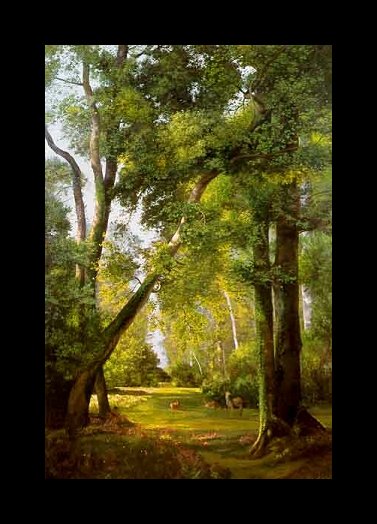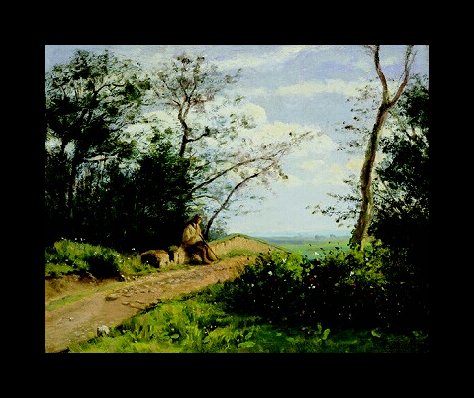Antoine Chintreuil (1814-1873)
Get a Chintreuil Certificate of Authenticity for your painting (COA) for your Chintreuil drawing.
For all your Chintreuil artworks you need a Certificate of Authenticity (COA) in order to sell, to insure or to donate for a tax deduction.
Getting a Chintreuil Certificate of Authenticity (COA) is easy. Just send us photos and dimensions and tell us what you know about the origin or history of your Chintreuil painting or drawing.
If you want to sell your Chintreuil painting or drawing use our selling services. We offer Chintreuil selling help, selling advice, private treaty sales and full brokerage.
We have been authenticating Chintreuil and issuing certificates of authenticity since 2002. We are recognized Chintreuil experts and Chintreuil certified appraisers. We issue COAs and appraisals for all Chintreuil artworks.
Our Chintreuil paintings and drawings authentications are accepted and respected worldwide.
Each COA is backed by in-depth research and analysis authentication reports.
The Chintreuil certificates of authenticity we issue are based on solid, reliable and fully referenced art investigations, authentication research, analytical work and forensic studies.
We are available to examine your Chintreuil painting or drawing anywhere in the world.
You will generally receive your certificates of authenticity and authentication report within two weeks. Some complicated cases with difficult to research Chintreuil paintings or drawings take longer.
Our clients include Chintreuil collectors, investors, tax authorities, insurance adjusters, appraisers, valuers, auctioneers, Federal agencies and many law firms.
We perform Antoine Chintreuil art authentication, appraisal, certificates of authenticity (COA), analysis, research, scientific tests, full art authentications. We will help you sell your Antoine Chintreuil or we will sell it for you.
Antoine Chintreuil was born in Bourg en Bresse. In 1838, he left to go and live in Paris. He entered the studio of the romantic and history painter Paul Delaroche in 1842. He was not to stay with Paul Delaroche though, as his true teacher was to be Jean Baptiste Camille Corot. Corot was to have an enormous influence on him. In fact, Chintreuil referred to himself throughout his whole life as Corot’s pupil. Corot introduced him to the technique of painting in ‘plein air,’ and thereafter Chintreuil began to paint outside in nature.
He did not immediately achieve success, and was rejected a number of times by the Salon before his first painting was accepted in 1847. He was given a great deal of support in the early days of his career by the songwriter Pierre-Jean de Beranger, and the art critic Champfleury. Pierre-Jean de Beranger bought a number of his paintings, and also persuaded the French state to buy some of them.

Les Bois Ensoleille
In 1850, Chintreuil joined a small community of landscape painters at Igny in the Bievre valley, southwest of Paris. It was here that he became good friends with the landscape painter Charles Daubigny. Soon afterwards, he moved to the village of Septeuil, near the town of Mantes. It was here that he produced magnificent paintings such as, ‘Last Rays of Sun on a Field of Sainfoin.’
It is said that Chintreuil’s paintings were the precursor to Impressionism. He was very concerned with the effect of the light and also atmospheric differences during different times of the day. He was not interested in portraying a picturesque version of nature, but more so with portraying it as it really was. His mentor and great teacher Corot said, ‘We must never forget to envelop reality in the atmosphere it first had when it burst upon our view. Whatever the size, whatever the object, the artist must first submit to his first impression.’
Chintreuil was certainly influenced by the words of Corot. The titles of his paintings alone give a clue to his interests in different atmospheric conditions, such as, ‘Morning Fog,’ and ‘The Evening Haze.’ His friend and art critic Champfleury referred to him as the painter of, ‘the fog and dewdrops.’
The painting, ‘House on the Cliffs near Fecamp,’ is a perfect example of Chintreuil’s style of painting. The modest subject matter of the painting and the sensitive treatment of the light are typical of his work.
Impressionist painters such as Claude Monet were greatly influenced by the work of artists such as Antoine Chintreuil. The painting, ‘Last Rays of Sun on a Field of Sanfoin,’ which hangs in the Museum of Fine Arts in Boston is a good example of a painting that came very close to the Impressionist style. It shows the countryside with peasants and the dazzling light effects as its focus. The Sanfoin which is a pink herb used to feed the animals has its own light and focus. It is as a consequence of paintings such as these that his work has been defined as a precursor to Impressionism.

Begere Reposent

Landscape
Chintreuil is a very important nineteenth century artist, not only because of his talent, but also because of his anticipation of what was to come, in terms of the future of art and painting. In the Salon of 1870, upon seeing his work, the French writer Emile Zola said,
“One senses an artist who is striving to go beyond the Naturalistic school of landscape painting and who,
although faithfully copying nature, attempted to catch her at a special moment difficult to transcribe.”
If you believe you own a work of art by Antoine Chintreuil, contact Art Certification Experts. We authenticate, appraise, research and provide Certificates of Authenticity (COA's) for works by Antoine Chintreuil.
Reviews
1,217 global ratings
5 Star
4 Star
3 Star
2 Star
1 Star
Your evaluation is very important to us. Thank you.
